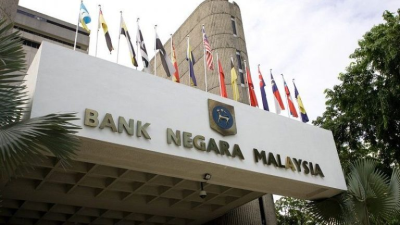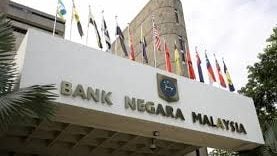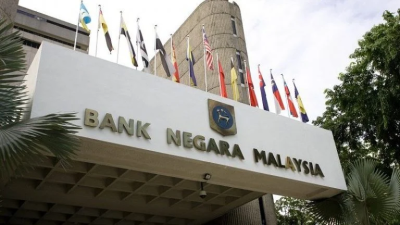Whether further rate hikes are in the pipeline will depend on the Federal Reserve’s next move as well as which way our economic indicators head to.
On September 8, Bank Negara announced a further 25 basis point increase in the OPR to 2.50%, the third hike since this May and the first time the central bank has raised the OPR in three consecutive meetings over the past 12 years.
The purpose is clear: to check inflation and stem the further slide of the ringgit.
The market has not ruled out the possibility of another two 25 basis point increases in November and next January to eventually bring the OPR to 3%.
Many countries around the world have been raising their interest rates to tame inflation in response to the Federal Reserve’s rate hikes since May.
The Fed has between March and July this year raised the interest rate four times by a total of 225 basis points, the most intensive since the 1980s with the apparent objective of tackling the most severe inflationary pressure in four decades, as The Wall Street Journal has reported.
The first to follow the footsteps of the Fed were the central banks of European countries by 50 basis points, to be echoed by the 100 basis point hike by Bank of Canada, while Middle Eastern countries followed suit with different magnitudes of rate hikes. Hong Kong Monetary Authority also upped the rate by 75 basis points in line with the Fed’s move.
It is therefore inevitable that our own Bank Negara would have to raise the interest rate to keep inflation at bay.
The rate hike has produced the desired results. The US July CPI announced on August 10 moderated to 8.5% from a 41-year-high of 9.1% recorded a month earlier, and the first time since early last year the inflation rate was lower than market expectation, and the euphoria was also reflected in the stock markets, with the Dow and Nasdaq making significant gains on the day.
That said, the market might have celebrated too early!
8.5% CPI is still way too high and far off from the US government’s goal to keep prices steady. The celebratory upswing and the abating inflation could as well just be a manifestation of bear market rally.
Quoting the Federal Reserve Bank of Minneapolis president Neel Kashkari, The Wall Street Journal reported that the Fed would likely raise the policy rate by another 1.5 percentage points this year with the rate likely to top 4.4% next year.

How high will the US policy rate be hiked will depend on the reactions of consumers and businesses after the monetary tightening.
Federal Reserve chairman Jerome Powell has signaled a slowing rate hike in the months to come and the quantum of increase will be determined by the performance of major economic indicators, including CPI, GDP and currency trends. Such a viewpoint has also been echoed by Malaysia’s financial institutions, including Maybank, RHB and CIMB.
Malaysia’s OPR reached a high of 3% in January 2014. And from January to July 2020, the OPR slowed to 1.75% before the three consecutive rises to 2.5% since this May. However, compared to the 3.25% high registered in recent years, there is still some room for further rate hikes.
On the contrary, the US’ policy rate was only 0.25% in 2014 and 2015. The rate was held at the same level also between April 2020 to this February before a series of drastic 225 basis point hikes sets in the last couple of months.
As Fed’s Powell has said, the intensity of rate hikes will very much depend on the performance of economic data. But for Malaysia, we remain cautiously optimistic about GDP growth, and believe we can still cap the inflation between 3-4%. as for the ringgit, its fall has gone a little out of control. Some analysts already feel that the intensity of rate hikes has been mild and the OPR should be increased by 50 to 75 basis points to arrest the free-fall of ringgit.
The ringgit has already plummeted to a low of 4.50 against the greenback, and this to a large extent has something to do with the 225 basis point increase in the US policy rate. The rate hikes have sent funds back to the US, triggering a fall of emerging market currencies. It is very hard for Bank Negara to effectively stop the continuous fall of the local unit.
The ringgit has remained suppressed for quite some time now and the strengthening dollar foretells further depreciation of the Malaysian currency. In the meantime, foreign investors will continue to stay on the sidelines or simply pull out of the local market. The continuous fall of the ringgit is anticipated unless the central bank can come up with better solutions.
A depreciating ringgit is a boon to exports although prices of imported goods are expected to climb. Imports make up a significant ratio of the daily necessities of average Malaysians. We need more than just chicken, eggs, cooking oil and petroleum to sustain our everyday lives and as such, our “palpable inflation” has soared far past 4% long ago!
According to CIMB Securities’ analysis, sectors that may be adversely impacted by Bank Negara’s rate hikes include automobile, construction, real estate and consumerism, as higher interest rate hampers consumption.
On the other hand, sectors such as exporters of semiconductors, gloves technology manufacturing services, telecommunication, transportation and oil & gas are least affected, while banks are set to benefit the most as floating loan interest rates are higher than fixed deposit rates.
Bank Negara’s objectives are to tame the inflation, stabilize the ringgit exchange rate and sustain economic growth. Whether further rate hikes are in the pipeline will depend on the Federal Reserve’s next move as well as how our economic indicators head to.
Right now it appears that stabilizing the ringgit’s exchange rate is perceived as the top priority because this will have a bearing on eh sentiments of foreign as well as local retail investors, not to mention spiraling inflation as a consequence of steep rises in the prices of imported goods.
ADVERTISEMENT
ADVERTISEMENT








































